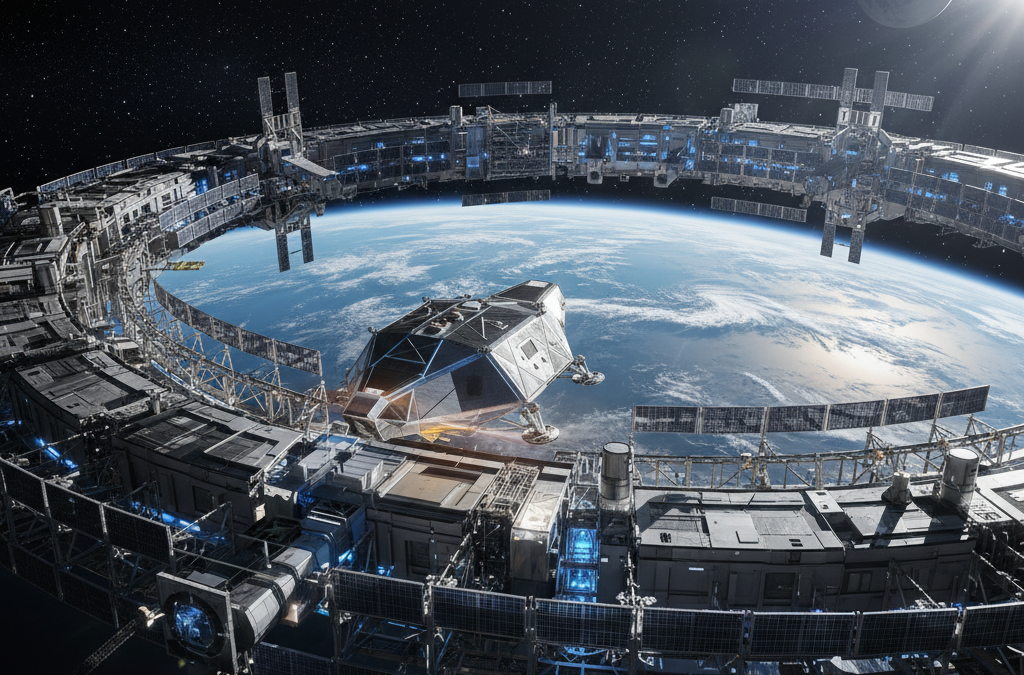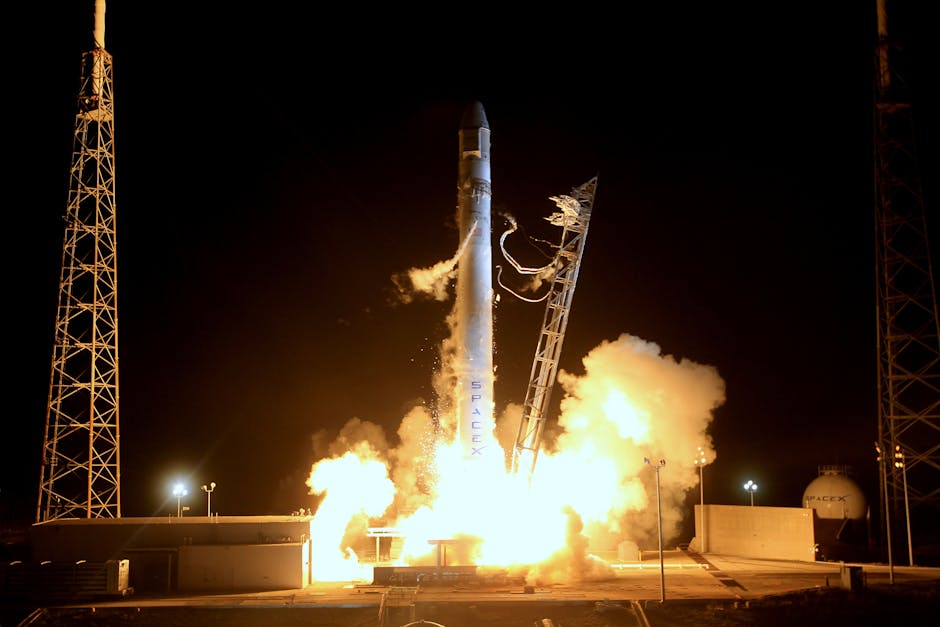To accelerate space exploration, Blue Origin is eager to support NASA’s lunar ambitions. The company’s CEO, Dave Limp, emphasized their dedication to helping the United States land humans on the Moon as soon as possible. Blue Origin is ready to move swiftly, recognizing the urgency to return to the Moon, especially with China’s rapid advancements. You’ll learn to support NASA’s lunar goals by understanding Blue Origin’s strategy, the New Glenn rocket’s role, and their sustainable vision for the future.
Table of Contents
We Also Published
Blue Origin’s CEO, Dave Limp, recently emphasized the company’s commitment to expediting human lunar landings, expressing readiness to support NASA’s goals. This commitment is fueled by the ambition to help the United States regain its leadership in space exploration, especially as China’s lunar program gains momentum. The company is actively working on proposals to accelerate the timeline for lunar missions.
Blue Origin’s Commitment to the Moon
During an interview, Dave Limp, the CEO of Blue Origin, articulated the company’s eagerness to collaborate with NASA in achieving its lunar objectives. He stated that Blue Origin is prepared to invest significant resources to facilitate a faster return to the Moon. The urgency stems from the desire to ensure the United States remains at the forefront of space exploration, particularly given China’s advancements in this domain.
NASA’s Revised Strategy
NASA is rethinking its approach to the Artemis program, acknowledging the need for a more aggressive timeline to counter China’s progress. This has led to the reopening of the competition for human landers, prompting Blue Origin to present revised proposals. These proposals include potentially faster architectures to meet NASA’s evolving requirements.
Blue Origin’s Innovative Solutions
Blue Origin is exploring innovative solutions, including multiple versions of its Mk. 1 cargo lander and a modified Mk 1.5 variant, to accelerate the path to the Moon. The company aims to provide NASA with options that align with its goal of a sustainable lunar presence. Limp expressed confidence in the company’s ability to contribute to a faster and more efficient lunar program.
The New Glenn Rocket and Lunar Ambitions
Blue Origin’s New Glenn rocket plays a crucial role in the company’s lunar ambitions. The successful launch and reuse of the first stage of the New Glenn rocket are critical for cost-effectiveness and sustainability in space exploration. The company is working to improve the reliability of the rocket’s engines for future missions.
Enhancements to the New Glenn Rocket
Following the initial launch attempt in January, Blue Origin has implemented several improvements to the New Glenn rocket, including enhancements to propellant conditioning and engine start-and-shutdown sequences. These upgrades aim to increase the reliability of the rocket’s first stage and ensure successful landings.
Future Prospects
The successful landing of the New Glenn rocket’s first stage would be a significant milestone for Blue Origin and the broader reusable space launch industry. It would showcase the company’s technological advancements and its commitment to sustainable space exploration. This achievement would also contribute to the acceleration of lunar missions.
The Sustainable Vision for Lunar Exploration
Limp underscored the importance of a sustainable approach to lunar exploration. Blue Origin is committed to its Human Landing System (HLS) contract and believes that a sustainable architecture is essential for long-term lunar presence. This includes the establishment of settlements and the use of the Moon as a stepping stone for further exploration of the Solar System.
Long-Term Goals
The company’s long-term vision encompasses not only reaching the Moon but also establishing a permanent presence there. Blue Origin aims to build settlements on the Moon and utilize it as a base for exploring the rest of the Solar System. This sustainable approach is crucial for the future of space exploration.
Balancing Short-Term Needs with Long-Term Sustainability
While acknowledging NASA’s need for faster solutions, Limp emphasized the importance of adhering to a sustainable vision. Blue Origin is dedicated to developing fully reusable landers and in-space vehicles to support NASA’s goals. This strategy balances the need for rapid progress with the long-term sustainability of lunar exploration.
Charting the Course for Lunar Dominance
Blue Origin’s commitment to assisting NASA in returning humans to the Moon reflects a strategic focus on the future of space exploration. By leveraging advanced technology and a sustainable approach, Blue Origin aims to play a key role in establishing a permanent human presence on the Moon and beyond.
| Aspect | Details | Significance |
|---|---|---|
| Blue Origin’s Commitment | Ready to help NASA achieve its goals, aiming for a faster return to the Moon. | Demonstrates a strong desire to advance space exploration, possibly to counter China’s advancements. |
| New Glenn Rocket | The company’s reusable rocket, designed for efficient launches and landings. | A critical component of Blue Origin’s strategy for cost-effectiveness and sustainability in space travel. |
| NASA’s Revised Strategy | NASA is seeking a faster timeline for lunar missions, reopening competition for human landers. | Reflects a need to accelerate the Artemis program, potentially to stay ahead of China. |
| Sustainable Vision | Blue Origin’s long-term goal of building settlements on the Moon and using it as a base for further exploration. | Highlights a commitment to establishing a permanent human presence in space, not just a quick visit. |
Also Read
From our network :
- Optimizing String Concatenation in JavaScript: Template Literals, Join, and Performance tips
- Limits: The Squeeze Theorem Explained
- Economic Importance of Soybeans in America: The $60 Billion Crop That Feeds the World
- Optimizing String Concatenation in Shell Scripts: quotes, arrays, and efficiency
- Bitcoin Hits $100K: Crypto News Digest
- Bitcoin price analysis: Market signals after a muted weekend
- JD Vance Charlie Kirk: Tribute and Political Strategy
- Limit Superior and Inferior
- The Diverse Types of Convergence in Mathematics
RESOURCES
- Artemis - NASA
- Photovoltaics and Power to Support NASA's Moon to Mars Objectives
- Moon to Mars Objectives | NASA
- Opening Statement of Space and Aeronautics Subcommittee ...
- Meet the Johnson CLPS Team Supporting NASA's Lunar ...
- IG-23-005 - Review of NASA's Space Technology Mission ...
- Opening Statement of Chairman Brian Babin at Leveraging ...
- Final Report - IG-24-013 - NASA's Commercial Lunar Payload ...
- Artemis program - Wikipedia
- Lunar Discovery and Exploration Priorities - NASA Science
- Lunar Exploration Analysis Group (LEAG)
- Critical scientific documents go missing from NASA-backed lunar ...
- National Cislunar Science & Technology Action Plan
- Reviewing Moon to Mars Architecture | APPEL Knowledge Services
- GAO-24-106878, ARTEMIS PROGRAMS: NASA Should Document ...








0 Comments